Finger lime (Citrus australasica) is a native Australian citrus that produces elongated fruits with a juicy pulp that resembles caviar. The fruits come in various colors, such as green, yellow, pink, red, and black, and have a tangy flavor that can enhance salads, desserts, cocktails, and seafood dishes. Finger lime trees are evergreen and can grow up to 6 meters tall. They have thorny branches and small leaves that are aromatic when crushed. Finger lime trees are also known as caviar lime, microcitrus, or bush lime.
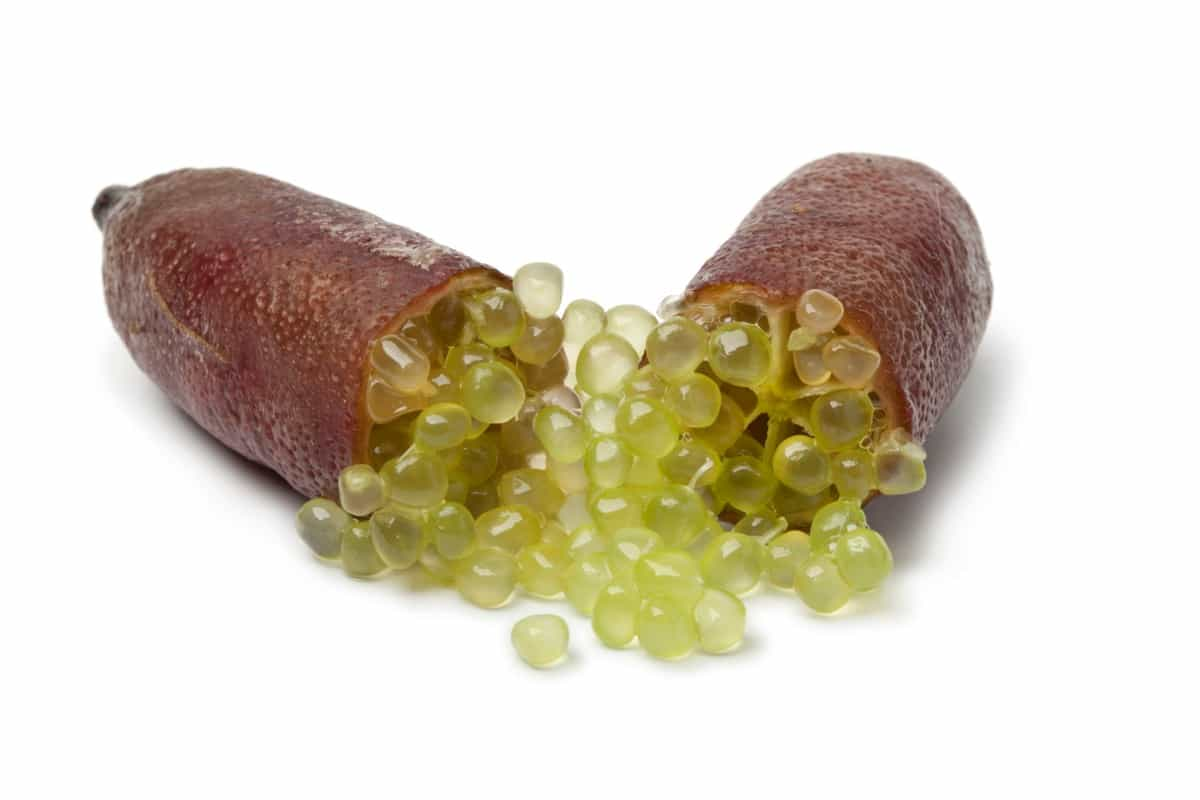
How to Grow a Finger Lime Tree
Finger Lime Growing Zone
Finger lime trees are hardy in USDA zones 9 to 11, where they can tolerate temperatures as low as -4 °C (25°F). They prefer a warm, humid climate with plenty of sunshine and rainfall. They can also grow in subtropical and tropical regions, but they may need some protection from frost and extreme heat. Finger lime trees can adapt to different soil types, but they prefer well-drained, sandy loam soils with a pH of 5.5 to 6.5.
Ideal Soil and Location for Your Finger Lime Tree
The ideal soil for finger lime trees is rich in organic matter, well-aerated, and moist but not waterlogged. To improve soil quality for finger lime trees, add compost, or peat moss manure, before planting and mulch with straw, bark, or leaves. Choose place with 6 hours of direct sunlight per day, but plant in partial shade for fewer fruits. Avoid windy or exposed areas for leaf damage or fruit drop.
Step-by-step Guide to Planting Finger Lime Trees
To plant finger lime trees, you will need a healthy sapling from a nursery or a garden center. You can also propagate your finger lime trees from seeds or cuttings, but this may take longer and require more care.
- Choose a suitable site for your finger lime tree, considering the soil, sunlight, and space requirements.
- Make a hole that is twice as deep and twice as big as your sapling’s root ball.
- Loosen the soil at the bottom and sides of the hole and mix in some organic matter.
- Remove the sapling from its pot and gently loosen the roots.
- Place the sapling in the center of the hole and spread the roots evenly.
- Fill the hole with soil and press it firmly around the base of the sapling.
- Water the sapling thoroughly and apply some mulch around it.
- Stake the sapling if needed to support its growth and protect it from wind.
- Prune any damaged or diseased branches or leaves.
Watering Techniques for Healthy Finger Lime Growth
Finger limes are citrus plants that need regular watering to thrive. However, overwatering cause root rot, fungal diseases, so it is important to use well-draining soil and avoid waterlogging. The best way to water finger limes is to use a drip irrigation system that delivers water slowly and evenly to the roots.
In case you missed it: Maximizing Yields and Profit from Sweet Lime Sustainably: A Comprehensive Guide
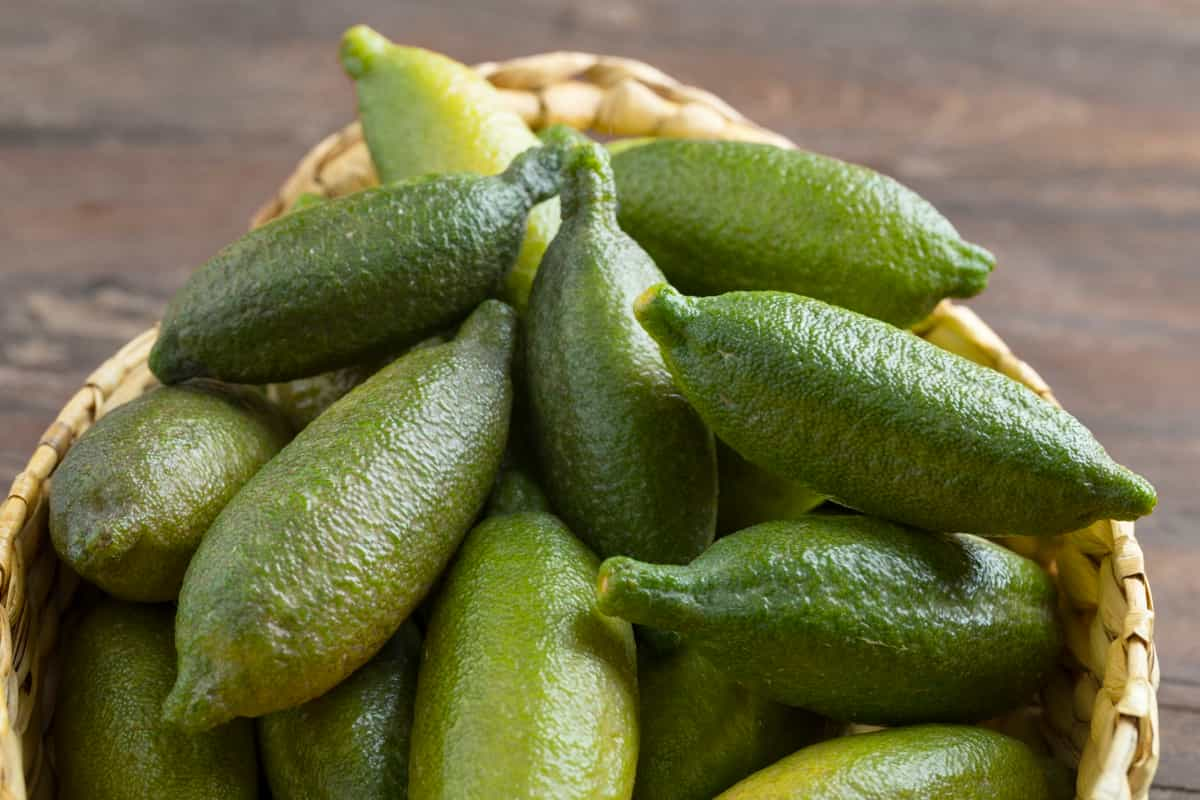
Alternatively, you can water by hand, but make sure check the soil moisture before watering. Water deeply and thoroughly until the water drains out of the bottom of the pot or the planting hole. Avoid wetting foliage, can increase the risk of pests and diseases.
Best Fertilizer for Australian Finger Lime Tree
Finger limes are heavy feeders that need regular fertilization to produce abundant and flavorful fruits. The best fertilizer for finger limes is a balanced citrus fertilizer that contains nitrogen, phosphorus, potassium, and micronutrients like iron, zinc, manganese, and copper. You can use either a granular or a liquid fertilizer, but make sure to follow the label instructions carefully.
A general guideline is to fertilize finger limes every six weeks from spring to summer when the plants are actively growing. Apply the fertilizer around root zone of plant, avoiding the trunk and the roots. Water well after fertilizing to prevent salt buildup and nutrient burn.
Homemade Fertilizers for Finger Lime Tree
Organic or homemade fertilizers for finger lime trees can be beneficial. Compost, made from kitchen scraps, garden waste, leaves, and grass clippings, can improve soil structure and fertility. Apply layer of compost around the tree’s base once or twice a year, preferably in spring and fall.
Worm castings, the excreta of earthworms, are high in nitrogen, phosphorus, potassium, calcium, magnesium, and micronutrients that benefit finger lime trees. You can buy worm castings from garden centers or make your own by setting up a worm bin with red wigglers or composting worms. Sprinkle worm castings around the tree every month during the growing season.
Pruning and Maintenance Tips for Finger Lime Trees
Pruning finger lime trees is not essential, but it can help to shape the plant, remove dead or diseased branches, improve air circulation, and encourage fruit production. The best time to prune finger lime trees is in late winter or early spring before the new growth starts. Use sharp and clean pruning tools to avoid spreading diseases or pests.
In case you missed it: How to Increase the Sweetness of Fruits: Exploring Different Methods to Enhance Fruit Sugar Content
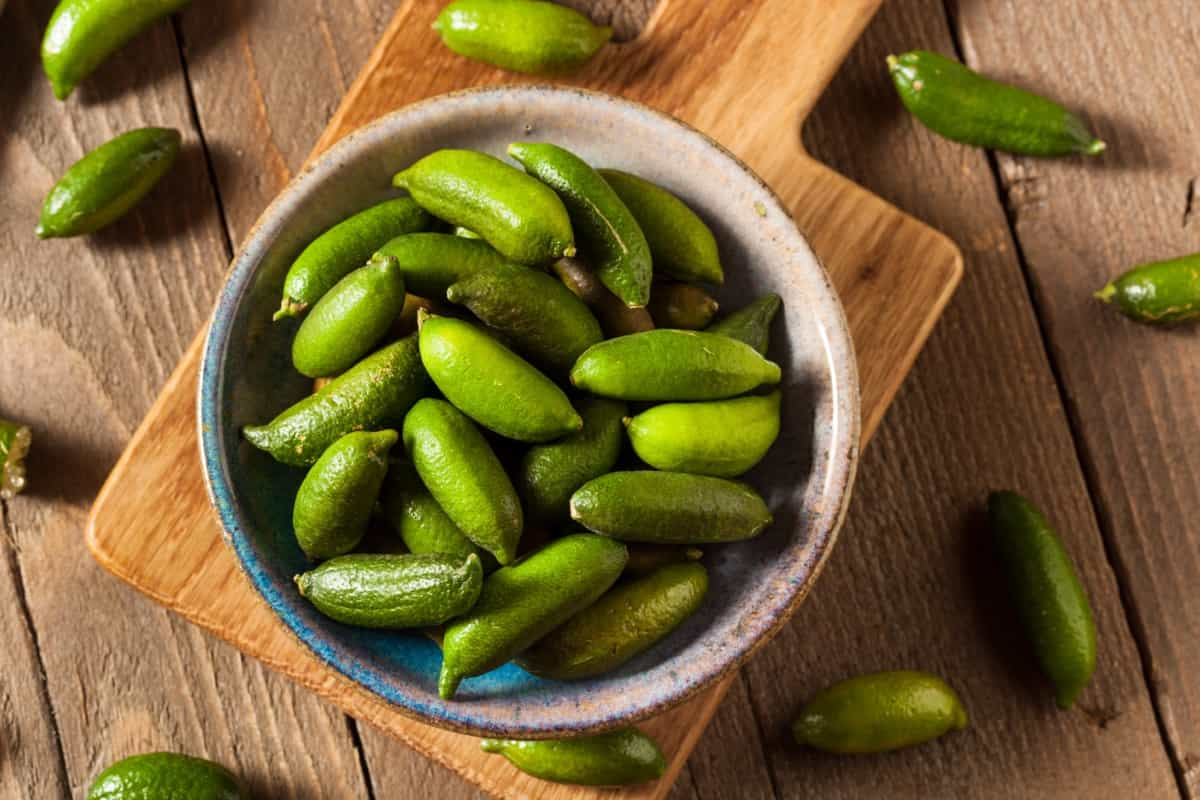
Cut off any branches that are crossing, rubbing, damaged, diseased, or dead. Remove suckers or sprouts that grow from the base or the trunk of the tree. Thin out any crowded or dense branches to allow light, air to reach the inner parts of the tree. Trim back any long or leggy branches to maintain a compact and bushy shape.
Protecting Finger Lime Trees From Pests and Diseases
Finger lime trees are resistant to pests, diseases, but can still be affected by common citrus problems. Pests like mites, scales, lepidopterans, aphids, and Asian citrus psyllid can cause leaf curling, yellowing, wilting, stunting, honeydew secretion, sooty mold growth, fruit drop, and citrus greening.
To control these pests, cultural methods like removing weeds, applying horticultural oil, introducing beneficial insects, or using organic or synthetic pesticides can be used. Diseases like phytophthora root rot, twig dieback, citrus canker, and HLB can cause root decay, branch dieback, leaf spots, fruit lesions, or tree death.
Climate Considerations: Growing Finger Limes in Different Regions
Finger limes are native to Australia, where they grow in subtropical and tropical rainforest climates. They can tolerate 23 to 113 °F (-5 to 45 °C), but they prefer warm and humid conditions. They are sensitive to frost and cold damage, so they need protection from freezing temperatures. If you live in a mild winter region, you can grow finger limes outdoors in the ground or containers.
Indoor Vs. Outdoor Growth: Adapting Care for Finger Lime Trees
Finger lime trees can thrive indoors and outdoors, but their care varies depending on their location. Outdoors require more frequent watering due to evaporation and transpiration and should be watered when the top 2 inches feel dry. Winter watering is less frequent, and the watering schedule should be adjusted based on weather and season. Indoors, finger lime trees require more frequent fertilization due to limited access to natural nutrients.
A balanced citrus fertilizer should be used every six weeks from spring to summer, with a reduced frequency in winter. Overfertilization can cause salt buildup and nutrient burn. Pruning is more frequent in indoor conditions, as finger lime trees tend to grow faster and leggier. Prune in late winter or early spring and remove dead, diseased branches, improve air circulation, and encourage fruit production. Finger lime trees are more susceptible to pests and diseases indoors, so regular monitoring and use of cultural or chemical methods are essential.
How to Grow Finger Lime in Pots
- Optimal pot selection: Choose a spacious pot with drainage holes (12 inches in diameter, 18 inches deep) for finger lime growth in limited spaces or cold climates.
- Soil preparation: Fill the pot with well-draining mix containing sand, perlite, or vermiculite. Enhance fertility with compost or worm castings.
- Planting process: Place the finger lime tree at the pot’s center, ensuring the root ball aligns with the soil surface. Firm soil and water adequately.
- Sunlight requirements: Position the pot in a sunny or partially shaded area, receiving at least 6 hours of direct sunlight daily. Artificial lights can supplement natural light.
- Watering regimen: Maintain regular watering, ensuring soil moisture without sogginess. Check and water deeply as needed.
- Fertilization routine: Apply balanced citrus fertilizer every six weeks in spring to summer per label instructions; reduce in winter.
- Pruning guidelines: Trim the finger lime tree in late winter or early spring for shaping, removing dead/diseased branches, improving air circulation, and encouraging fruiting.
- Frost protection: Shield from frost by relocating indoors or to a sheltered area when temperatures fall below 40 °F (4 °C), ensuring proper lighting, air circulation, and humidity.
In case you missed it: Citrus Farming in Spain: Citrus Fruit Cultivation Cost, Profit, and Production by Area
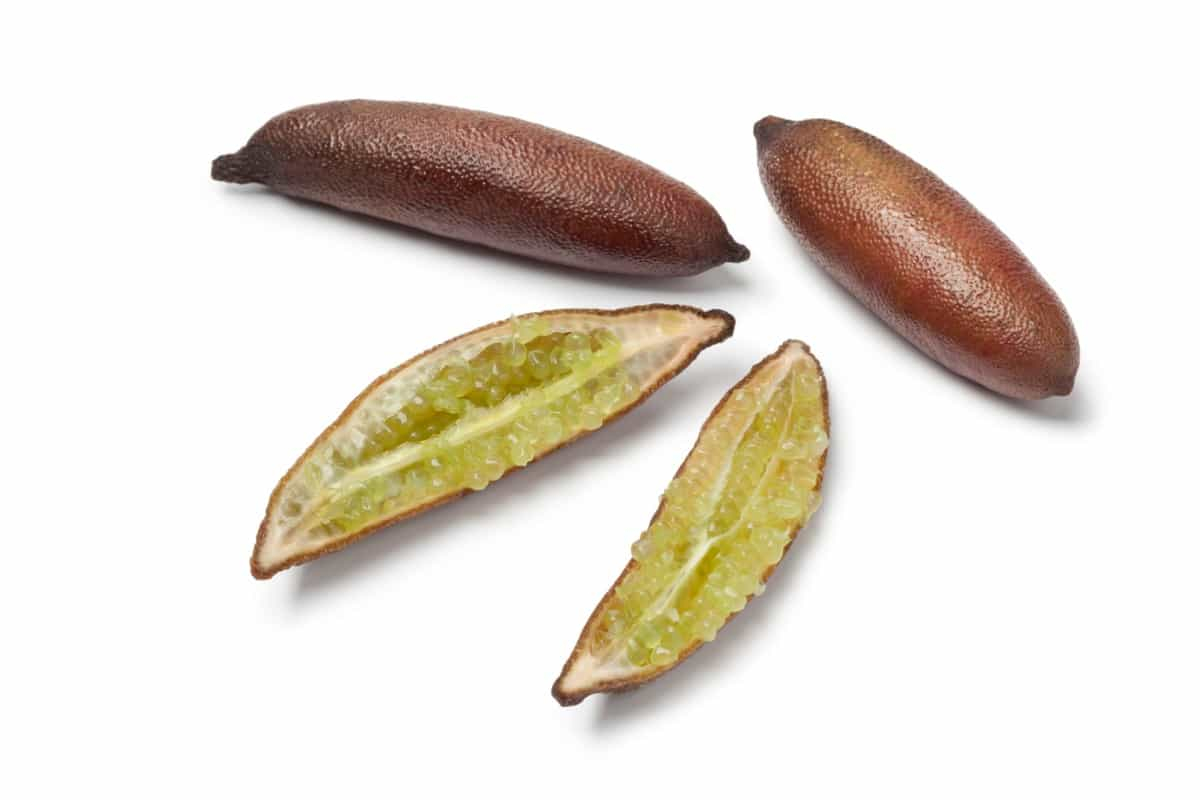
Finger Lime Tree Growth Stages/Life Cycle and Timeline
Finger lime trees, native to Australia, are evergreen plants with a slow growth rate, taking up to 8-12 years to reach maturity. Their life cycle is divided into four stages: seed, seedling, juvenile, and adult. Seeds are small, round, and dark brown, found inside the fruit. Seedlings are delicate and require protection from sunlight, frost, and pests. Juveniles are young plants that have not flowered or fruited and can grow up to 6 feet tall in 5 years. Adults, which can reach up to 25 feet tall, are mature and require pruning and moderate watering.
Harvesting Finger Limes: Timing and Techniques
Finger limes are harvested annually from March to May, depending on the climate and variety. They are firm, glossy, and brightly colored, green to yellow to red to purple to brown. Harvesting is done using sharp scissors or pruners, preventing damage to the fruit and tree. Handling is gentle, and finger limes can be stored in a cool, dry place in the refrigerator. They can also be frozen for up to 6 months without losing flavor or texture.
Troubleshooting Common Issues in Finger Lime Cultivation
Finger lime trees face several health and productivity issues. Pests like mites, scales, lepidopterans, aphids, and Asian citrus psyllids can damage the tree’s leaves, stems, flowers, and fruit. To control pests, use organic methods like horticultural oil, insecticidal soap, neem oil, or beneficial insects. Diseases like phytophthora root rot, twig dieback, citrus canker, citrus greening, or anthracnose can cause symptoms like yellowing or wilting of leaves, dieback of branches, lesions, or reduced fruit quality.
To prevent diseases, use disease-resistant varieties, avoid overwatering or poor drainage, prune diseased branches promptly, sanitize tools between cuts, and avoid spreading infected plant material. Nutrient deficiencies can cause symptoms like yellowing leaves, stunted growth, poor flowering, or leaf curling. Correct nutrient deficiencies with balanced citrus fertilizer every six weeks and soil pH adjustment with lime or sulfur.
Organic Methods for Australian Growing Finger Lime Trees
Finger lime trees are native to Australia and thrive in rainforests. They prefer warm, humid conditions with partial to full sun exposure and are tolerant of drought and salt spray. To grow finger lime trees organically, choose a suitable site with well-draining soil, at least 6 hours of sun per day, and protection from frost and strong winds.
Prepare a planting hole by digging twice deep as the root ball and mixing organic matter like compost or manure. Remove the finger lime tree from its pot, loosen its roots, and place it in the center of the hole. Water the tree thoroughly and mulch it with organic materials to retain moisture and add nutrients.
Fertilize the tree every six weeks with organic citrus fertilizer. Prune the tree lightly after harvesting to remove dead or diseased branches and maintain air circulation. Monitor the tree for pests and diseases using organic methods like horticultural oil, insecticidal soap, neem oil, or beneficial insects. Use disease-resistant varieties, avoid overwatering or poor drainage, prune diseased branches promptly, sanitize tools, and avoid spreading infected plant material.
Winter Care for Finger Lime Trees in Cold Climates
Finger lime trees are tropical plants that cannot tolerate frost or freezing temperatures. In cold climates, they require winter care to protect them from damage. Two options are bringing them indoors or covering them outdoors. If in a container, bring it indoors in a sunny spot, gradually acclimating to avoid shock.
In case you missed it: Citrus Farming in India: Citrus Fruit Cultivation Cost, Profit, and Production by State
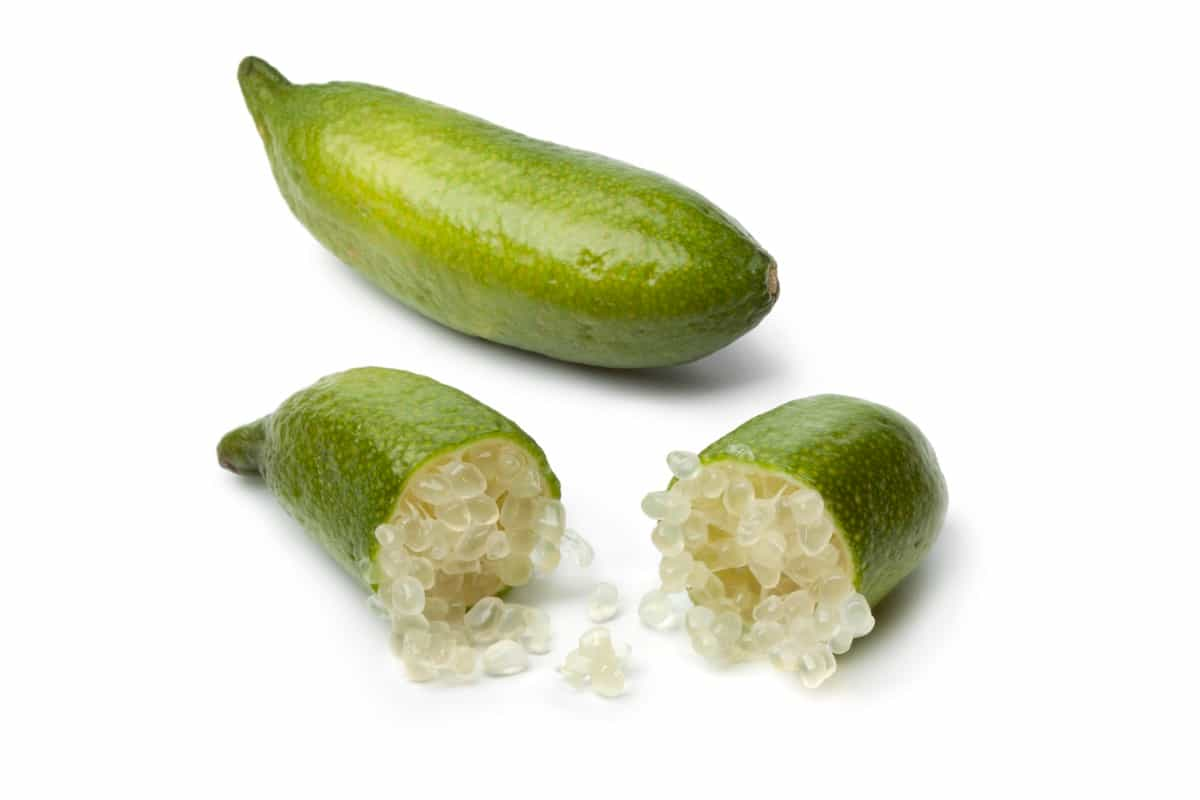
Move it to a shaded spot outdoors for a few days before bringing it indoors. Water sparingly and fertilize only in spring. If in the ground, cover it with a frost cloth or blanket, remove it during the day, wrap the trunk and branches with burlap or bubble wrap, and add mulch to protect the roots from the cold.
Propagating Finger Lime Trees
Finger lime trees can be propagated through seeds or cuttings. Seeds are found inside the fruit and can germinate in cell trays with well-draining soil. Cuttings are taken from healthy branches with at least two pairs of leaves, about 6 inches long, and clean cut at an angle below a leaf node.
How to Grow a Finger Lime Tree From Seed
Finger lime is a citrus fruit native to Australia that has a unique caviar-like texture and tangy flavor. It is also known as caviar lime or Australian finger lime. To grow a finger lime tree from seed, you need fresh seeds from ripe fruits.
You can plant the seeds in a cell tray with well-draining soil and keep them moist and warm until they sprout. Then, you can transplant them to individual pots and gradually move them to larger containers as they grow. Finger lime trees are slow-growing and may take up to 15 years to produce fruits, so be patient and provide them with enough light, water, and fertilizer.
How to Grow a Finger Lime Tree From Cuttings
Another way to propagate finger lime trees is by using cuttings from healthy branches. Cuttings are faster and easier than seeds, and they ensure that the new plants have the same characteristics as the parent plant. To grow a finger lime tree from cuttings, you need to take 6-inch long cuttings from semi-hardwood stems in late winter or early spring.
To propagate cuttings, remove lower leaves, dip the cut end in rooting hormone, and insert them in moist potting mix-filled pots. Cover with plastic bags to create a humid environment. Place in a bright spot but avoid direct sunlight. Water regularly and check for roots after six weeks. Transplant cuttings to larger pots or outdoors if suitable.
Finger Lime Tree Flowering and Pollination
Finger lime trees produce small, fragrant flowers that are pink or white. The flowers usually appear in spring or summer, depending on the variety and climate. Finger lime trees are self-fertile, which means they can produce fruits without cross-pollination from other trees. However, cross-pollination can increase fruit yield and quality, so it is beneficial to have more than one tree or different varieties of finger lime trees nearby. You can also hand-pollinate the flowers by transferring pollen with small brush or cotton swab.
Finger Lime Yield per Tree
The yield of finger lime trees depends on the age, size, health, variety, climate, and care of the tree. Generally, finger lime trees start bearing fruits after 3 to 5 years of planting, but they may take longer if grown from seeds. A mature finger lime tree can produce up to 10 kg of fruits per year, but this may vary depending on the growing conditions.
Finger lime fruits are harvested when they are fully ripe, usually from March to May in Australia. The fruits are long, cylindrical, and often curved, resembling fingers. They come in different colors, such as green, yellow, red, purple, or brown.
Finger Lime Tree Price and Uses
Finger lime trees are rare and exotic plants that are not widely available in nurseries or online stores. The price of finger lime trees may vary depending on the size, quality, variety, and source of the plant. Finger lime plants, a type of citrus fruit, are typically sold for INR 1550, with a six-month-old plant costing around the same. Despite its sour taste, finger limes are commonly used as garnishes or flavor components in culinary creations.
In case you missed it: Kinnow Farming: Kinnow Cultivation Cost, Profit, and Production by State in India
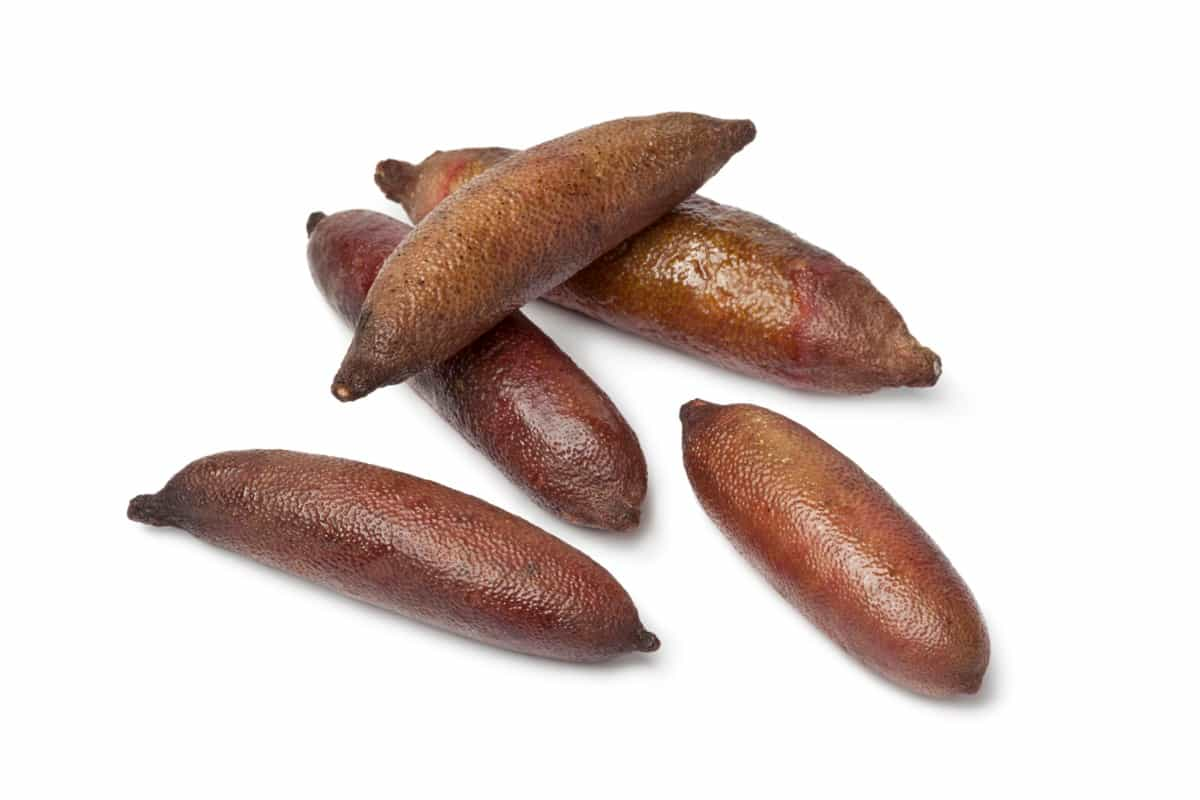
They are priced between 40 and 50 dollars per pound in the US domestic market and are best used for cooking, jams, garnishes, sauces, and drinks. Finger lime fruits are used as a garnish or ingredient in salads, desserts, drinks, sauces, and seafood dishes. They add a burst of refreshing acidity and flavor to any dish. They are rich in vitamin C, antioxidants, and other beneficial compounds that can boost immunity, skin health, digestion, and more.
Care and Tips for Finger Lime Tree
Indoor cultivation of finger lime trees involves container gardening. Proper pruning is crucial for healthy growth. The planting process should be followed carefully. Understanding the growth stages is essential. Consider the price of finger lime trees. Explore diverse culinary uses. Diligent care is required for these trees.
Address yellowing leaves promptly. Choose appropriate fertilizers. Grafting techniques can be employed. Guard against frost damage. Mulching supports tree health. Observe flowering patterns. Understand the pollination process. Assess fruit yield factors. Implement a consistent watering schedule. Provide winter care for optimal growth.
Conclusion
Cultivating a Finger Lime Tree involves thoughtful steps. Select a suitable pot, employ well-draining soil, and ensure proper sunlight. Water and fertilize consistently, and employ pruning for optimal growth. Protect against frost. Following these guidelines ensures successful planting, propagation, and care for Citrus Australasica, commonly known as Caviar Lime.
- Types of Pesticides Used in Agriculture: A Beginner’s Guide
- Economical Aquaculture: A Guide to Low-Budget Fish Farming
- 15 Common Planting Errors That Can Doom Your Fruit Trees
- How to Make Houseplants Bushy: Effective Tips and Ideas
- Innovative Strategies for Boosting Coconut Pollination and Yield
- Pollination Strategies for Maximum Pumpkin Yield
- The Complete Guide to Chicken Fattening: Strategies for Maximum Growth
- Natural Solutions for Tulip Problems: 100% Effective Remedies for Leaf and Bulb-Related Issues
- Revolutionizing Citrus Preservation: Towards a Healthier, Greener Future
- Natural Solutions for Peony Leaf and Flower Problems: 100% Effective Remedies
- Maximizing Profits with Avocado Contract Farming in India: A Comprehensive Guide
- Natural Solutions for Hydrangea Problems: 100% Effective Remedies for Leaf and Flowers
- The Ultimate Guide to Choosing the Perfect Foliage Friend: Bringing Life Indoors
- From Sunlight to Sustainability: 15 Ways to Use Solar Technology in Agriculture
- The Ultimate Guide to Dong Tao Chicken: Exploring from History to Raising
- The Eco-Friendly Makeover: How to Convert Your Unused Swimming Pool into a Fish Pond
- Mastering the Art of Delaware Chicken Farming: Essentials for Healthy Backyard Flocks
- 20 Best Homemade Fertilizers for Money Plant: DIY Recipes and Application Methods
- How to Craft a Comprehensive Free-Range Chicken Farming Business Plan
- Brighten Your Flock: Raising Easter Egger Chickens for Beauty and Bounty
- How to Optimize Your Poultry Egg Farm Business Plan with These Strategies
- Subsidy for Spirulina Cultivation: How Indian Government Schemes Encouraging Spirulina Farmers
- Ultimate Guide to Raising Dominique Chickens: Breeding, Feeding, Egg-Production, and Care
- Mastering the Art of Raising Jersey Giant Chickens: Care, Feeding, and More
- Ultimate Guide to Raising Legbar Chickens: Breeding, Farming Practices, Diet, Egg-Production
- How to Raise Welsummer Chickens: A Comprehensive Guide for Beginners
- How to Protect Indoor Plants in Winter: A Comprehensive Guide
- Ultimate Guide to Grow Bag Gardening: Tips, Tricks, and Planting Ideas for Urban Gardeners
- Guide to Lotus Cultivation: How to Propagate, Plant, Grow, Care, Cost, and Profit
- Agriculture Drone Subsidy Scheme: Government Kisan Subsidy, License, and How to Apply Online
- Ultimate Guide to Raising Araucana Chickens: Breed Profile, Farming Economics, Diet, and Care
- Bringing Hydroponics to Classroom: Importance, Benefits of Learning for School Students
- Ultimate Guide to Raising Polish Chickens: Breed Profile, Farming Economics, Diet, and Care
- Ultimate Guide to Raising Australorp Chickens: Profile, Farming Economics, Egg Production, Diet, and Care
- Silkie Chicken Farming: Raising Practices, Varieties, Egg Production, Diet, and Care
- Sussex Chicken Farming: Raising Practices, Varieties, Egg Production, Diet and Care